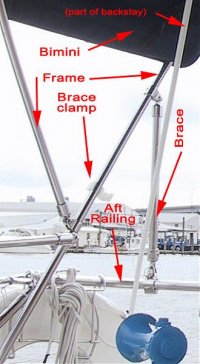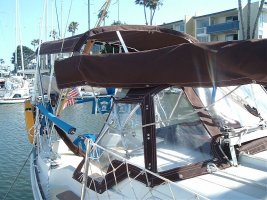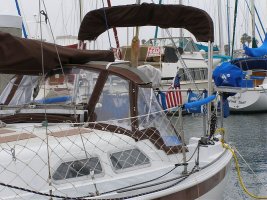Steve Swann
Member III
I need some opinions and expert advice. I have never commissioned a bimini for a boat before. I have a spray dodger on my E25 and am having a new custom bimini made this week for additional shade next summer and I want to do it right by avoiding pitfalls.
My question is this: Should I have the bimini attach (zip?) to the dodger or leave a space, or have a panel made that can attach one to the other, or be left out to leave a ventilation space? What is the good, bad, and ugly about one vs. the other?
Since I am having new metal bent as well, is there anything I should be aware of insofar and do's and don'ts? Any thoughts to tube thickness, mounting plates, relative strength, attachment considerations, etc.?
I am thinking of being able to fold back the bimini to bungee to the split backstay if I want it mounted yet remain furled. Any thoughts?
Steve Swann
Seahorse
My question is this: Should I have the bimini attach (zip?) to the dodger or leave a space, or have a panel made that can attach one to the other, or be left out to leave a ventilation space? What is the good, bad, and ugly about one vs. the other?
Since I am having new metal bent as well, is there anything I should be aware of insofar and do's and don'ts? Any thoughts to tube thickness, mounting plates, relative strength, attachment considerations, etc.?
I am thinking of being able to fold back the bimini to bungee to the split backstay if I want it mounted yet remain furled. Any thoughts?
Steve Swann
Seahorse




